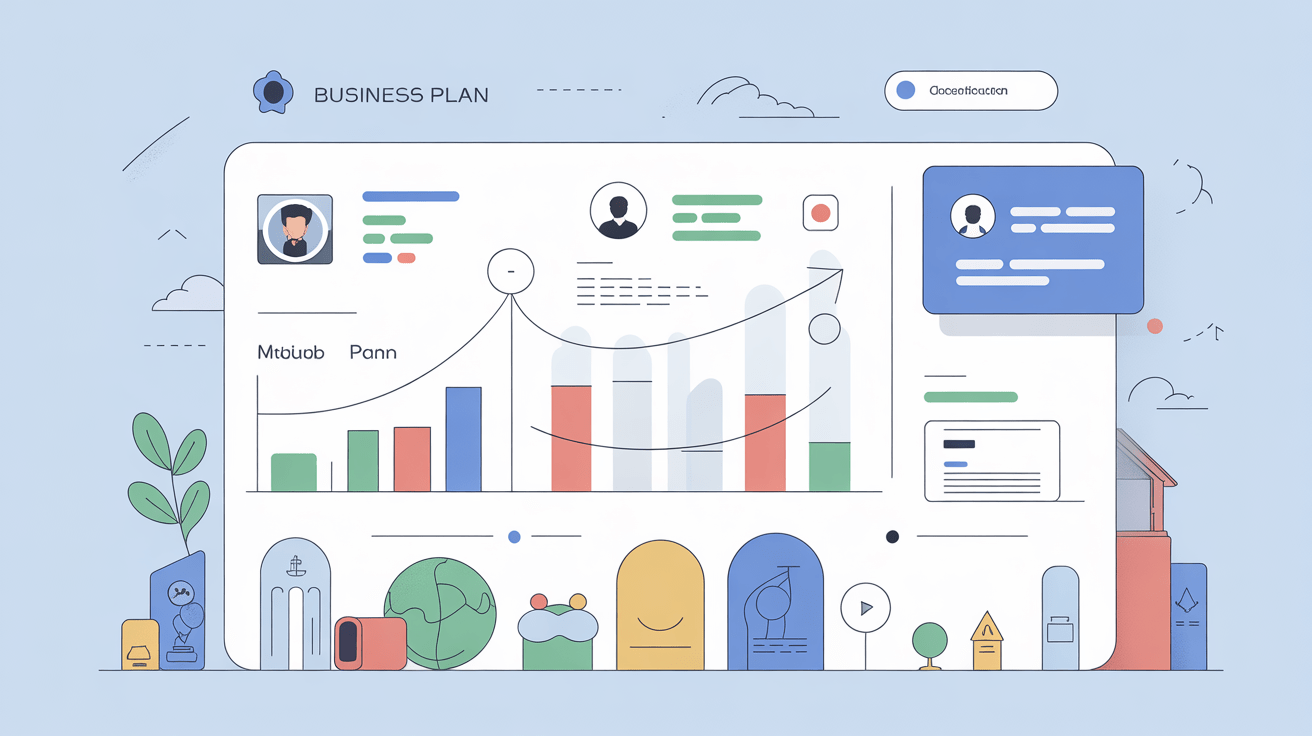
In the rapidly evolving startup and technology landscape, a robust business plan is no longer a mere formality-it’s an essential blueprint to secure investment, align teams, and strategically navigate market challenges.Leveraging generative AI like ChatGPT revolutionizes this traditionally tedious process, empowering developers, founders, and researchers to craft detailed, data-driven, and adaptive business plans at scale. This article delivers an authoritative, analytical, and hands-on guide to harnessing ChatGPT step by step for business plan creation tailored to tech-centric ventures.
Understanding ChatGPT’s Role in Business Plan Creation
Why Use ChatGPT for Business Planning?
ChatGPT, an advanced large language model developed by OpenAI, excels at natural language understanding and generation, enabling it to interpret complex prompts and provide nuanced outputs. For business plans, it can:
- generate market research summaries and competitor analyses.
- Draft executive summaries and operational strategies.
- Model financial projections and scalability scenarios.
Its ability to iteratively refine outputs based on user inputs makes it ideal for evolving business narratives.
Defining the Business Plan Scope with AI Assistance
Before prompting ChatGPT, establish the plan’s purpose: Are you targeting investors, internal stakeholders, or partners? The plan scope (tech startup, SaaS product, manufacturing, etc.) will guide the specificity of prompts and output fidelity.
Step 1: Preparing Foundational Business Inputs for ChatGPT
Structuring Your Initial Data & Research
Gather your company’s core concept, value proposition, target demographics, competitors, and funding goals. Organize these inputs into clear bullet points or brief narratives-this acts as a high-quality context base for ChatGPT’s responses.
Formatting Business Goals for AI Comprehension
Clearly define short, mid, and long-term objectives.For example:
- Short: Launch MVP with 100 active users in 6 months.
- Mid: Achieve breakeven at 12 months with 1,000 paid subscribers.
- Long: Expand market into three new regions within 3 years.
Step 2: Crafting Targeted Prompts for Each business Plan Section
Executive Summary Generation
Feed ChatGPT your company overview, mission statement, and high-level goals with a prompt like:
"Write a concise executive summary for a [industry] startup that focuses on [product/service], targeting [market], aiming to [main business goals]."Refine by asking for tone adjustments-formal, persuasive, or investor-focused.
Market Analysis via AI Research
use ChatGPT to synthesize competitive landscapes by inputting market parameters and known competitors:
"Analyze the competitive landscape for [market segment], listing main competitors, customer pain points, and market size estimates."Supplement AI outputs with recent industry reports such as Statista Startup Industry Data for accuracy.
Step 3: Designing Your Product or Service Description with ChatGPT
Detailing Unique value Propositions (UVP)
Prompt ChatGPT to highlight differentiators based on your technology or business model, e.g.,
"Describe the unique value proposition for a saas platform that automates [task] using [technology]."Iteratively request option UVPs to find the strongest fit.
Incorporating Technical Architecture Overviews
To appeal to a technical audience or investors, generate a conceptual diagram description that you can later illustrate:
"Explain the high-level technical architecture of a cloud-native app that uses microservices and AI-driven analytics."Step 4: utilizing ChatGPT for Marketing and Sales Strategy formulation
Generating Go-to-Market Strategies
Request specific marketing approaches aligned with your startup’s stage and market, such as inbound content marketing, paid ads, or strategic partnerships:
"Outline a cost-effective go-to-market strategy for a B2B AI software startup targeting mid-sized enterprises."Sales Funnel and Customer Acquisition Frameworks
ask ChatGPT to construct detailed sales funnel stages,KPIs,and onboarding flows for your product:
"Create a customer acquisition funnel with key metrics for a subscription-based SaaS product in healthcare tech."the synergy between iterative prompting and domain-specific inputs drives predictive intelligence - and it just works!
Step 5: Financial Planning and Forecasting with AI Support
Modeling Revenue Streams and Costs
Input your revenue assumptions-pricing,unit economics,expected user growth-and let ChatGPT draft financial projections:
"Generate a 3-year revenue forecast including subscription fees,expected churn rates,and CAC for a digital platform."Remember to validate AI output against established financial planning tools like financial projection standards.
Constructing Break-even and Profitability Scenarios
Get stepwise guidance for calculating break-even points and margins:
"Explain how to calculate break-even point considering fixed and variable costs for a SaaS business."Step 6: Operational Plan and Team Structure Using ChatGPT
Defining Organizational Roles and Workflow
ChatGPT can help generate recommended team roles and workflows to scale operations effectively:
"Suggest an operational team structure for a rapidly growing AI startup with 30 employees."Risk Analysis and Contingency Planning
Use prompts to produce risk factors and mitigation plans that strengthen your operational resilience:
"List common operational risks for SaaS startups and suggest contingency strategies."Step 7: refining and Iterating Your Business Plan with ChatGPT Feedback
Conducting AI-Powered Plan Reviews
Once a draft is complete, ask ChatGPT to critique and suggest improvements for clarity, logic, and investor appeal:
"Review this executive summary for weaknesses and suggest enhancements."Incorporating Real-World Updates and Feedback
Regularly update your plan with new market data and user feedback by re-engaging ChatGPT to revise sections dynamically. This iterative approach is agile and data-informed.
APIs and Automation: Integrating ChatGPT into Business Plan Workflows
Using OpenAI’s API for Scalable Business Plan generation
Developers can automate parts of the business plan creation by integrating ChatGPT via OpenAI’s API documentation, enabling dynamic report generation with input parameters.
Combining ChatGPT Outputs with Data Visualization Tools
Generate textual business insights via ChatGPT and feed them into dashboards or visualization platforms (Power BI, Tableau) for stakeholder presentations.
Mitigating Risks: Ensuring Accuracy & Intellectual Property Compliance
Cross-validating AI-Generated Content
AI outputs can sometimes reflect outdated or imprecise data; validate critical financials and market insights against primary sources or expert consultations.
Ensuring Ownership and Confidentiality
Be cautious sharing sensitive proprietary info with public AI tools. Use enterprise-grade models or on-premise solutions where available to secure your intellectual property.
The synergy between domain expertise and AI-powered synthesis drives predictive intelligence - and it just works!
Real-World Use Cases: ChatGPT in Action for Business Planning
Startup Founder Stories and Success Metrics
Enterprises like various startups covered by TechCrunch report accelerated fundraising cycles and clearer pitch decks after integrating ChatGPT into their planning workflows.
Investor Perspectives on ChatGPT-Driven Plans
Venture investors increasingly expect data-backed,sharply articulated plans. ChatGPT enhances preparatory rigor, helping founders meet these expectations efficiently.
SEO & E-E-A-T Best Practices for AI-Generated Business Plans
Writing with Authority and Transparency
Clarify AI’s role: Present ChatGPT-generated content as a tool-assisted draft requiring expert oversight. This aligns with Google’s E-E-A-T guidelines to enhance trust and credibility.
Keyword Strategy for Business Plan Content
Focus on keywords like “AI business plan automation,” “ChatGPT for startups,” and “[industry] business plan template” organically integrated into headings and body for optimal search visibility.
Conclusion: Mastering Stepwise Business Plan Creation with ChatGPT
Bridging human domain expertise with AI’s rapid content synthesis transforms traditional business plan workflows, unlocking speed, clarity, and adaptability unachievable before. By following these stepwise instructions and maintaining rigorous oversight, founders and innovators can build compelling, data-driven business plans that resonate with stakeholders and optimize market success.






